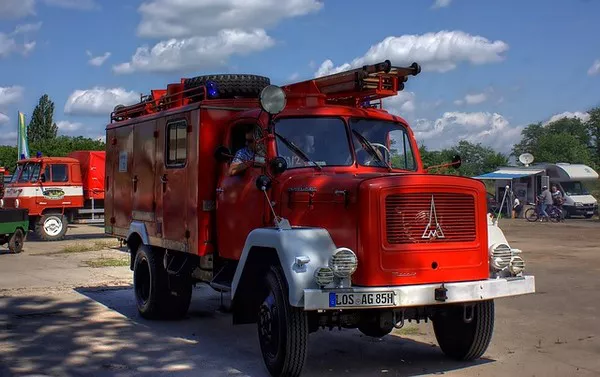The kitchen is the heart of any home or commercial establishment, where delicious meals are prepared and memories are made. However, it is also one of the most common areas where fires can break out due to the presence of flammable materials and open flames. In the event of a kitchen fire, having the appropriate fire extinguisher on hand is crucial for effectively controlling and extinguishing the flames. In this article, we will explore the type of fire extinguisher used in kitchen fires and the importance of this essential safety tool.
Understanding Fire Classes
Before delving into the specific type of fire extinguisher used in kitchen fires, it is essential to understand the classification of fires based on the type of fuel involved. The classification system divides fires into five classes, each denoted by a letter:
Class A: Fires involving ordinary combustibles such as wood, paper, cloth, and plastics.
Class B: Fires fueled by flammable liquids like gasoline, oil, grease, and cooking oils.
Class C: Fires involving energized electrical equipment like appliances, outlets, and electrical panels.
Class D: Fires fueled by combustible metals such as magnesium, titanium, and sodium.
Class K: Fires involving cooking oils and fats, commonly found in kitchens.
For kitchen fires, the most relevant classes are Class B and Class K, as they involve flammable liquids and cooking oils, respectively.
Type of Fire Extinguisher for Kitchen Fires
Class B Fire Extinguishers:
Class B fire extinguishers are designed to combat fires involving flammable liquids. In a kitchen setting, this type of extinguisher is suitable for extinguishing fires caused by grease, cooking oil, or other flammable liquids. The most common type of fire extinguisher used for Class B fires is the dry chemical fire extinguisher, specifically those with monoammonium phosphate as the extinguishing agent.
Dry chemical fire extinguishers are effective against flammable liquid fires as they smother the flames and create a barrier between the fuel and oxygen, suppressing combustion. It is crucial to select a fire extinguisher labeled as suitable for Class B fires to ensure it is effective in the event of a kitchen fire involving flammable liquids.
Class K Fire Extinguishers:
Class K fires, caused by cooking oils and fats, are particularly common in commercial kitchens where deep frying and high-temperature cooking take place. These fires can be extremely hazardous and challenging to control, making the use of the appropriate fire extinguisher critical.
Class K fire extinguishers are specially designed to tackle kitchen fires involving cooking oils and fats. They typically use a wet chemical extinguishing agent, such as potassium acetate or potassium citrate, which reacts with the hot cooking oil to create a soapy foam. This foam cools the oil, prevents re-ignition, and forms a blanket over the burning oil, cutting off the oxygen supply.
Unlike other fire extinguishers, Class K extinguishers are specifically formulated to address the unique characteristics of kitchen fires involving cooking oils, making them the ideal choice for restaurant kitchens and other food service establishments.
Importance of Proper Fire Extinguisher Selection
Using the wrong type of fire extinguisher on a kitchen fire can be ineffective or even dangerous. For example, using a water-based fire extinguisher on a grease fire can cause the hot grease to splatter, spreading the fire and increasing the risk of injury.
Properly trained personnel and residents should be familiar with the fire extinguisher types available in the kitchen and know which one to use based on the type of fire. It is essential to have the right type of fire extinguisher installed in easily accessible locations within the kitchen area.
Fire Safety Practices for Kitchen Fires
In addition to having the appropriate fire extinguisher on hand, practicing good fire safety habits is essential for preventing and managing kitchen fires:
1.Regular Maintenance: Regularly inspect and maintain fire extinguishers to ensure they are in good working condition and ready for use.
2. Fire Suppression Systems: Commercial kitchens should have automatic fire suppression systems installed above cooking equipment. These systems can quickly and effectively suppress kitchen fires.
3. Emergency Response Plan: Have a clear and well-communicated emergency response plan in place, detailing the appropriate actions to take in the event of a kitchen fire.
4. Fire Extinguisher Training: Train kitchen staff and residents on the proper use of fire extinguishers, emphasizing the importance of selecting the right type for specific fire scenarios.
Conclusion
The type of fire extinguisher used in kitchen fires is a critical consideration for effective fire prevention and safety. With the presence of flammable materials, open flames, and high-temperature cooking, kitchens pose a significant risk for fires. Selecting the appropriate fire extinguisher based on the specific class of fire is vital to effectively combat kitchen fires and protect lives and property.
By installing the right fire extinguisher, practicing fire safety measures, and providing proper training, homeowners and businesses can significantly reduce the risk of kitchen fires and ensure a safe and enjoyable culinary experience for all. Remember, fire safety is everyone’s responsibility, and preparedness is the key to minimizing fire-related incidents in the kitchen.


